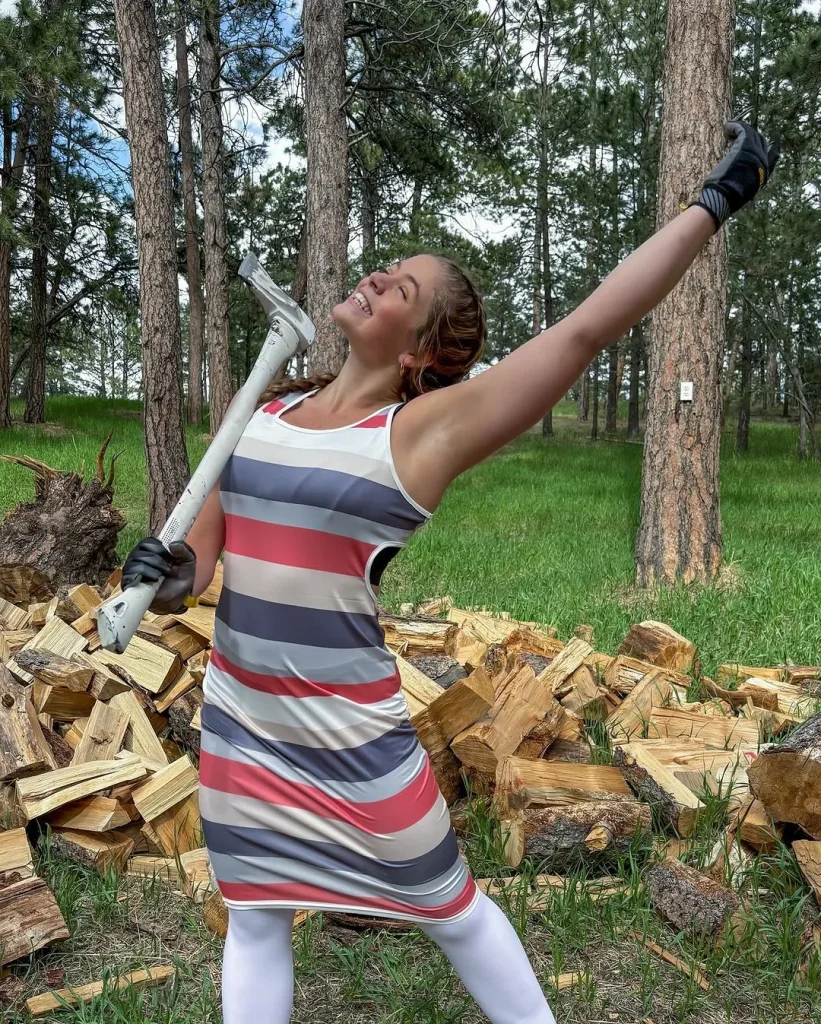Aspen Chopping: The Ultimate Guide To Mastering The Craft
Listen up, folks! If you've ever wondered what aspen chopping is all about, you're in the right place. Aspen chopping isn't just some random activity; it's an art form that combines skill, precision, and a deep understanding of nature. Whether you're a seasoned woodworker or someone who's just curious about this fascinating practice, this guide will take you through everything you need to know about aspen chopping.
Now, let me tell you something real quick. Aspen chopping isn't as simple as grabbing an ax and hacking away at a tree. It's a craft that requires patience, knowledge, and respect for the environment. Aspen trees are unique in their own way, and chopping them involves techniques that have been passed down through generations. So, if you're ready to dive deep into this world, keep reading.
What makes aspen chopping so special? Well, for starters, aspen trees are known for their lightweight yet strong wood, making them perfect for a variety of uses. From crafting furniture to building structures, aspen wood has proven its worth time and time again. And let's not forget the environmental benefits of using aspen wood. It's renewable, sustainable, and eco-friendly, which is a big deal in today's world.
Read also:Judge Judy Mogging The Ultimate Guide To Understanding The Phenomenon
What Is Aspen Chopping All About?
Let's break it down, shall we? Aspen chopping is the process of cutting down aspen trees in a way that maximizes their potential while minimizing waste. It's not just about getting the wood; it's about doing it right. This involves understanding the tree's structure, the best time to harvest, and the tools needed to get the job done efficiently. Aspen chopping is a skill that takes time to master, but once you get the hang of it, it's incredibly rewarding.
Now, here's the thing. Aspen trees grow in clusters, and they have a unique root system that allows them to spread and regenerate. This means that when you chop down one tree, others will grow in its place. It's like nature's way of saying, "Take what you need, but don't forget to give back." This makes aspen chopping a sustainable practice that aligns with modern environmental values.
Why Choose Aspen Wood?
Aspen wood is the real MVP when it comes to woodworking. It's lightweight, making it easy to handle and transport. But don't let its weight fool you; it's also incredibly strong and durable. Aspen wood is resistant to warping and cracking, which makes it ideal for furniture, flooring, and even paper production. Plus, it has a beautiful grain pattern that adds a touch of elegance to any project.
And let's talk about sustainability for a sec. Aspen trees grow relatively fast, and their root system ensures that they regenerate quickly. This means that aspen chopping can be done without causing long-term damage to the environment. In fact, it can actually promote healthy forest growth by thinning out dense areas and allowing sunlight to reach the forest floor.
Tools of the Trade: What You Need for Aspen Chopping
Alright, let's talk tools. If you're serious about aspen chopping, you're gonna need the right gear. First up, you've got your trusty ax. Now, not just any ax will do. You want one that's specifically designed for chopping trees. Look for something with a sharp, durable blade and a comfortable handle. You'll also need a good pair of gloves to protect your hands and a helmet to keep your noggin safe.
But wait, there's more! A chainsaw can be a game-changer when it comes to aspen chopping. It allows you to work faster and more efficiently, especially if you're dealing with larger trees. Just remember to use it responsibly and always follow safety guidelines. And don't forget about your sawhorses and wedges. These little helpers will make your life so much easier when it comes to cutting and splitting the wood.
Read also:Southside Shawty The Rising Star Of Trap Music Scene
Pro Tips for Efficient Aspen Chopping
Here's the deal. If you want to be a pro at aspen chopping, you need to know a few tricks of the trade. First, always start by inspecting the tree. Look for any signs of decay or damage that might make it unsafe to chop. Once you've given the tree the once-over, it's time to plan your cuts. Start with a notch cut on the side you want the tree to fall, followed by a back cut on the opposite side.
And hey, don't forget about the weather. Chopping in the wrong conditions can be dangerous and inefficient. Aim for dry, calm days when the wood is less likely to split or crack. Oh, and always have a first-aid kit on hand. Accidents happen, and it's better to be prepared than sorry.
The Art of Aspen Woodworking
Once you've chopped down your aspen tree, it's time to put that wood to good use. Aspen woodworking is where the real magic happens. Whether you're crafting a piece of furniture, building a cabin, or creating something more artistic, aspen wood is the perfect material to work with. Its smooth texture and even grain make it easy to shape and finish.
One of the coolest things about aspen woodworking is that it allows you to get creative. You can stain, paint, or leave the wood natural, depending on the look you're going for. And because aspen wood is so versatile, it can be used for a wide range of projects, from small crafts to large-scale constructions. So, whether you're a beginner or a seasoned pro, aspen woodworking has something for everyone.
Popular Uses for Aspen Wood
Let's talk about some of the most popular uses for aspen wood. First up, furniture. Aspen wood is perfect for crafting tables, chairs, and cabinets. Its strength and durability ensure that your furniture will last for years to come. Next, we've got flooring. Aspen wood floors are not only beautiful but also easy to maintain, making them a popular choice for homeowners.
And let's not forget about paper production. Aspen wood is a major player in the paper industry, thanks to its high cellulose content. It's used to make everything from printer paper to cardboard, and it's a key component in many eco-friendly packaging solutions. So, whether you're building something big or writing something small, aspen wood has got you covered.
Environmental Benefits of Aspen Chopping
Now, let's talk about the elephant in the room. Aspen chopping is not only good for your projects; it's also good for the planet. Aspen trees are renewable resources that help maintain healthy ecosystems. By chopping aspen trees responsibly, you're actually contributing to the health of the forest. It's a win-win situation.
And here's another cool fact. Aspen trees are home to a variety of wildlife, including birds, insects, and small mammals. By managing aspen forests through chopping, you're helping to create diverse habitats that support biodiversity. Plus, aspen trees are great at sequestering carbon, which helps combat climate change. So, the next time someone tells you chopping trees is bad, you can set them straight.
Sustainable Practices in Aspen Chopping
So, how do you make sure your aspen chopping is sustainable? It all comes down to responsible management. Start by working with certified foresters who know how to harvest trees in a way that promotes forest health. Follow local regulations and guidelines to ensure that your practices are environmentally friendly. And always remember to replant trees whenever possible.
Another key aspect of sustainable aspen chopping is minimizing waste. Use every part of the tree whenever you can. The wood can be used for projects, the bark can be turned into mulch, and even the leaves can be composted. By maximizing the use of each tree, you're reducing your environmental impact and making the most of nature's gifts.
Health and Safety in Aspen Chopping
Alright, let's get serious for a moment. Aspen chopping can be dangerous if you don't take the proper precautions. Always wear protective gear, including gloves, helmets, and eye protection. Make sure your tools are in good condition and that you know how to use them properly. And never, ever chop alone. Always have someone with you in case of an emergency.
And here's a tip. Take breaks! Chopping trees is hard work, and fatigue can lead to mistakes. Stay hydrated, eat well, and listen to your body. If you're feeling tired or overwhelmed, take a step back and regroup. Safety should always come first, no matter how urgent the job may seem.
Common Mistakes to Avoid in Aspen Chopping
Let's talk about some common mistakes people make when chopping aspen trees. First up, not planning your cuts properly. This can lead to the tree falling in the wrong direction, which is not only dangerous but also wasteful. Another big no-no is using dull tools. A dull ax or chainsaw will make your job harder and increase the risk of accidents.
And don't forget about the weather. Chopping in wet or windy conditions can be hazardous and reduce the quality of your work. Always check the forecast before heading out, and be prepared to reschedule if the conditions aren't ideal. Lastly, never underestimate the importance of safety gear. It might seem like a hassle, but it could save your life.
Conclusion: Why Aspen Chopping Matters
So, there you have it. Aspen chopping is more than just cutting down trees; it's a craft that combines skill, respect for nature, and a commitment to sustainability. Whether you're using aspen wood for furniture, flooring, or paper production, you're tapping into a resource that's both renewable and eco-friendly.
Now, here's the thing. If you've found this guide helpful, I'd love to hear from you. Leave a comment below and let me know what you think. And if you've got any questions or tips of your own, feel free to share them. The more we learn from each other, the better we can all become at aspen chopping. So, go out there, get chopping, and make the most of this incredible resource!
Table of Contents
What Is Aspen Chopping All About?
Tools of the Trade: What You Need for Aspen Chopping
Pro Tips for Efficient Aspen Chopping
Environmental Benefits of Aspen Chopping
Sustainable Practices in Aspen Chopping
Health and Safety in Aspen Chopping
Common Mistakes to Avoid in Aspen Chopping
Exploring The Spooky World Of Haunted House Of Hamburgers Photos
Discovering The Inspiring Journey Of Yohama Eshima: A Story Of Resilience
Thats Phucked: A Closer Look At The Phrase That’s Taken Over Conversations

This is the Story of a Unique Aspen Chopping and her Ten Color Axes.

This is the Story of a Unique Aspen Chopping and her Ten Color Axes.

This is the Story of a Unique Aspen Chopping and her Ten Color Axes.